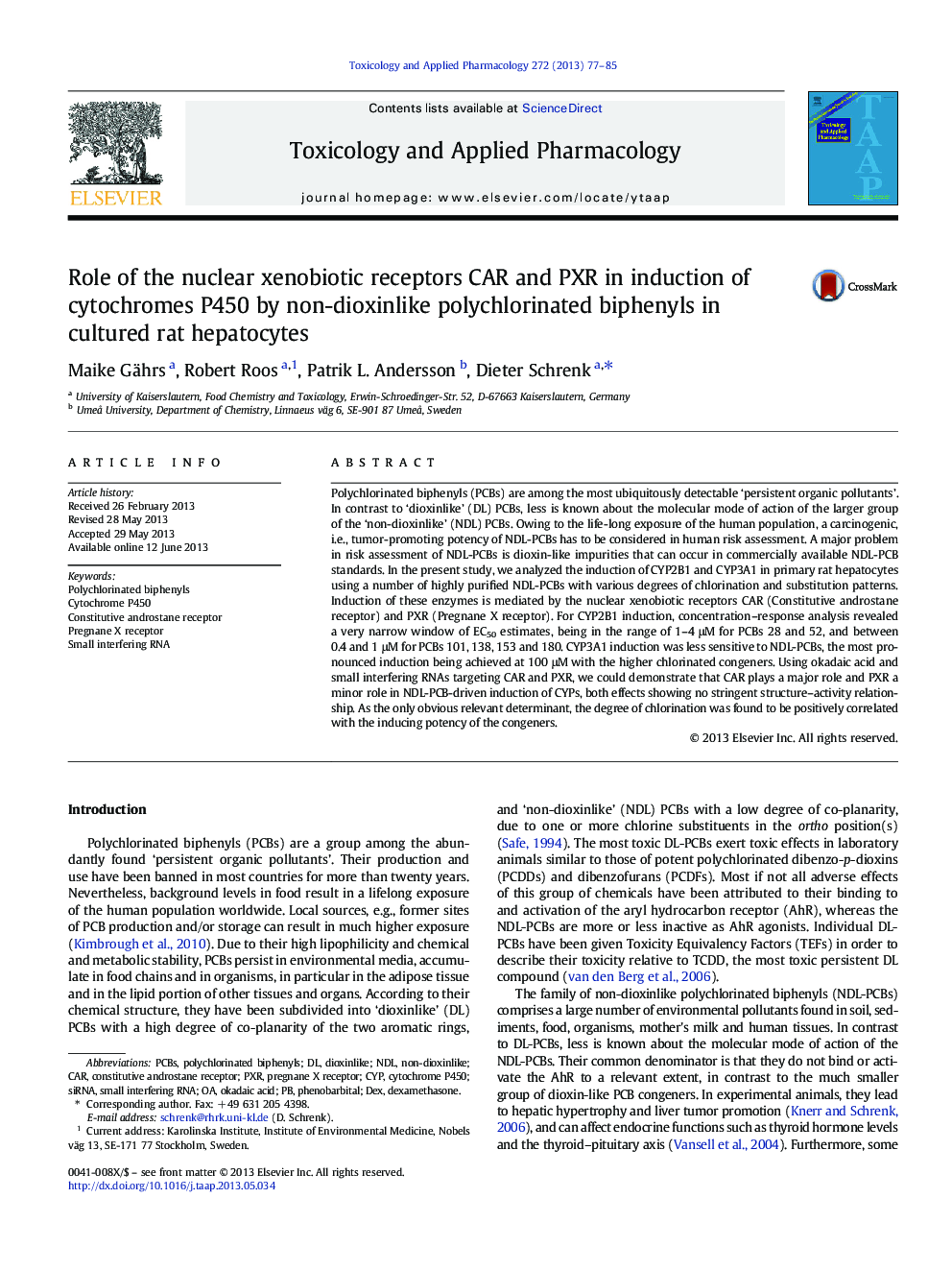| Article ID | Journal | Published Year | Pages | File Type |
|---|---|---|---|---|
| 2568603 | Toxicology and Applied Pharmacology | 2013 | 9 Pages |
•We analyzed six highly purified NDL-PCBs for CYP2B1 and CYP3A1 expression.•CAR plays a major, PXR a minor role in NDL-PCB-driven induction of CYPs.•The degree of chlorination seems to be the major parameter for the inducing potency.•There exists a competition between CAR and PXR.•Activated PXR may antagonize CAR binding to the CYP2B1 promoter.
Polychlorinated biphenyls (PCBs) are among the most ubiquitously detectable ‘persistent organic pollutants’. In contrast to ‘dioxinlike’ (DL) PCBs, less is known about the molecular mode of action of the larger group of the ‘non-dioxinlike’ (NDL) PCBs. Owing to the life-long exposure of the human population, a carcinogenic, i.e., tumor-promoting potency of NDL-PCBs has to be considered in human risk assessment. A major problem in risk assessment of NDL-PCBs is dioxin-like impurities that can occur in commercially available NDL-PCB standards. In the present study, we analyzed the induction of CYP2B1 and CYP3A1 in primary rat hepatocytes using a number of highly purified NDL-PCBs with various degrees of chlorination and substitution patterns. Induction of these enzymes is mediated by the nuclear xenobiotic receptors CAR (Constitutive androstane receptor) and PXR (Pregnane X receptor). For CYP2B1 induction, concentration–response analysis revealed a very narrow window of EC50 estimates, being in the range of 1–4 μM for PCBs 28 and 52, and between 0.4 and 1 μM for PCBs 101, 138, 153 and 180. CYP3A1 induction was less sensitive to NDL-PCBs, the most pronounced induction being achieved at 100 μM with the higher chlorinated congeners. Using okadaic acid and small interfering RNAs targeting CAR and PXR, we could demonstrate that CAR plays a major role and PXR a minor role in NDL-PCB-driven induction of CYPs, both effects showing no stringent structure–activity relationship. As the only obvious relevant determinant, the degree of chlorination was found to be positively correlated with the inducing potency of the congeners.
